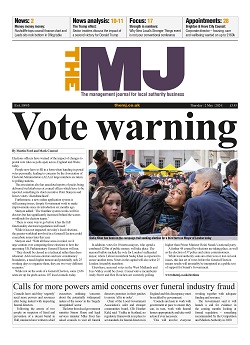The year 2022 was an extremely busy one, with a big upturn in senior-level permanent vacancies in local government.
While the challenges of lockdown and Covid impacted the numbers of roles advertised in 2020 and 2021, the year just gone bucked this trend with many local authorities focusing on resolving their prior temporary and interim arrangements. With this lens now shifting to implementing their previously ‘on hold’ structural reviews, this meant the number of roles advertised in 2022 increased by 20% from 2021. Indeed, 2022 was busier than the pre-Covid levels of 2019 (+10%).
Inevitably, while very encouraging from a candidate perspective, this also meant the sector faced challenges from a supply and demand viewpoint. For some roles, the market’s oversaturation resulted in not enough candidates or calibre of talent required to make up a strong shortlist, with multiple similar roles often advertised at the same time. This resulted in a battle for talent – one in which a strong employer value proposition (EVP), a willingness to truly embrace flexible working and a genuine commitment to pay salaries commensurate with roles/levels has been essential.
During 2022 the number of local government chief executives retiring or seeking alternative career opportunities increased once again. The already-high 2021 levels rose from 39 to 44 in 2022, and over the past four years 146 chief executive roles have been advertised. With so many highly experienced and well-respected chief executives moving on, the challenge for the sector will include ensuring the calibre and pipeline of talent is in place to continue to make a positive and influential contribution to local government, as well as securing candidates from other sectors.
Given the highly visible and admirable job local government has performed over the past few years, it appears to have generated more interest from people outside of the sector, who now recognise the rewarding career local government can offer. However, this attraction is often offset by the reality of pay not being commensurate with the challenges of the role in many instances. This, along with trends in other areas can be seen in the Roles Advertised table (see below).
As you will see, the main change was a significant uplift in the number of corporate services roles during 2022. In particular, the demand for senior legal professionals saw the number of vacancies in 2022 outstripping the figures for the previous three years combined.
There were 58 roles advertised for monitoring officers/deputy monitoring officers in 2022 and this demand has led to a saturated market. When combined with growing client expectations in light of recent, well-documented governance failures across local government, it reveals an area we at Penna have realised needs addressing. In 2023, we will look to work closely with several partners in supporting talent development and succession planning in this area.
Another area which saw increased demand during 2022 compared with 2021 is HR/OD and transformation. This rise is not surprising considering how the increase in new structures and new ways of shaping how public services are delivered.
So, what lies ahead this year? With a continued focus on local government reorganisation, devolution and health and social care integration, I feel the senior recruitment market will continue to be both busy and challenging, with the war for talent continuing.
To tackle this, many local authorities will now revisit their EVP and refresh their vision and values to continue attracting and retaining in-demand and high-calibre diverse individuals. There may also be a need for local government to revisit its talent and succession planning, to ensure individuals are ready to step up into more senior roles as the needs arise, particularly in key areas such as chief executive, monitoring officers, s151 officers and directors of public health. This war for talent must also mean that there is finally more openness to candidates coming from other sectors.
Part of this planning must be a continued, and in some cases increased focus on equalities, diversity, and inclusion. From entry level to executive, we must all work hard to ensure candidate pools become more representative of the communities served. At Penna, we’re proud of our achievements in supporting clients being more inclusive in their recruitment strategies and processes – in November 2022, 55% of our appointments were female, 25% ethnic minority, 4.5% disabled and 4.5% LGBTQ+.
Candidates notice and care about your recruitment messages – so we’d advise shouting about your culture, values and EDI strategy and commitments and ensuring your programme looks for culture add, not culture fit.
We hope our market insight is of interest – we look forward to continuing to support the local government talent market this year.
Ben Cox is director, executive search at Penna
ben.cox@penna.com
|
% of roles advertised per year |
2019 |
2020 |
2021 |
2022 |
Change |
|
Chief executive |
9 |
11 |
10 |
8 |
-2 |
|
Social care |
24 |
27 |
30 |
28 |
-2 |
|
Place |
41 |
30 |
36 |
31 |
-5 |
|
Corporate services |
26 |
32 |
24 |
33 |
+9 |
This article is sponsored content for The MJ



